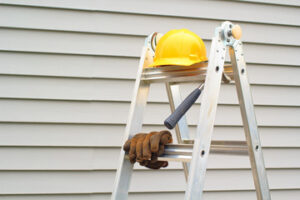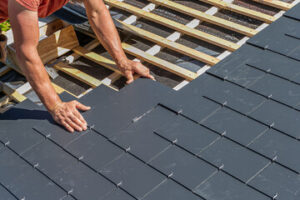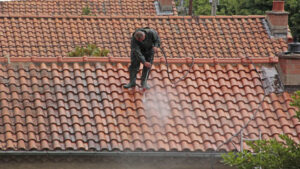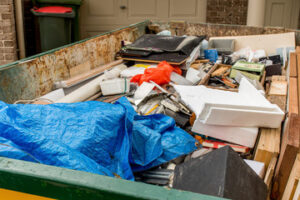Siding Companies provide a wide range of services that can improve the overall appearance and functionality of your home. They also help protect against moisture, mold, and pests, and enhance resale value.

They can also help you choose siding material that meets your needs and budget. Look for contractors that offer transparent quotes that break down costs by line item.
When hiring a siding contractor, you want to be sure that they are licensed and insured. This is because they are required to have these credentials in order to work legally in your state. If they don’t, then you could be facing legal issues later on if something goes wrong with the project. Additionally, insurance is important because it protects you from any injuries or property damage that may occur during the project.
Licensed siding contractors are able to provide references from past clients and examples of their previous work. These can be valuable insights into their professionalism and quality of work. They should also be able to provide you with a written estimate of the total cost of the project. Make sure to get everything in writing and ask about any warranties that they offer on their services.
In addition to being licensed, reputable siding contractors are experienced professionals who follow all industry standards and regulations. These practices ensure that your siding renovation project is done properly, on time, and within budget. They are also committed to providing exceptional customer service and keeping you informed of your project’s progress.
Before choosing a siding contractor, look for online reviews on platforms like Google or Yelp. You can also contact local homeowners to see how they feel about their experience with the contractor. Pay special attention to reviews that mention timely completion, durable results, and strong communication.
During your consultation, the contractor will assess your needs and discuss different material options. They’ll also do a thorough inspection of your home to determine any prep work that may be required. In addition, they’ll recommend the right type of insulation for your home.
Licensing requirements for siding contractors vary by state, but you should always hire a professional with a license. Licensing is a sign that the contractor has met the required standards for your area and is qualified to perform the work. They will also have an extensive knowledge of local building codes and industry standards, and they’ll be able to answer any questions you might have.
They are experienced
Before choosing a siding contractor, you should check their credentials. A reputable professional will be licensed and insured, which offers protection throughout the project. Moreover, they will comply with local standards and industry regulations. This is essential to guarantee safety and a high-quality finish. Additionally, you should also verify that they are bonded and have workers’ compensation insurance.
Another important factor to consider is customer service. A reputable siding company will communicate clearly with you throughout the entire project. They will provide a quote and itemized breakdown of costs, including permit fees. They will also answer your questions and concerns in a timely manner. This is a good way to gauge their professionalism and commitment to customer satisfaction.
It is also recommended to read online reviews and testimonials. Taking the time to evaluate reviews and ratings can help you find the best contractor for your project. Look for positive comments that highlight the contractor’s professionalism, quality of work, and adherence to deadlines. A few negative reviews are normal, but they should be outweighed by positive feedback.
Lastly, you should ask potential contractors for references. You can then call them and discuss their experience with the contractor. Ask them about their experience, how they handled any issues, and if they were satisfied with the final outcome of the project. The contractor should be able to provide you with several references, and each one should be willing to share their firsthand experiences.
Siding contractors should be able to provide you with a detailed list of materials that are available on the market and explain how each type works. They can even give you advice on the best type of material to use for your home’s unique weather conditions and other factors. This can ensure that you get the right siding for your needs.
It is also important to ask prospective contractors what their process is for preparing a house for siding installation. They should be able to tell you about their pre-installation procedures, which may include removing existing siding, repairing damaged sheathing, and installing a new weather barrier. They should also be able to give you a clear timeline for the project. In addition, they should be able to provide you with dependable clean-up services. This will prevent your yard from becoming a mess and protect any outdoor elements of your property from damage.
They offer warranties
When hiring a siding contractor, it is important to ask about their warranty offerings. Choosing a company that offers a comprehensive warranty will give you peace of mind in the event something goes wrong. It is also a good idea to make sure the company carries liability insurance and workers’ compensation. If a company does not carry these policies, you should look elsewhere for your next siding contractor.
Siding warranties vary widely by brand and contractor, so it is important to review them carefully. A trusted contractor will be able to answer any questions you may have about the terms of their warranty and explain any language that is unclear.
Typically, homeowners will need to gather relevant documentation, such as proof of purchase and photographs of the issue. They will also need to contact the warranty provider and follow their instructions for submitting a claim. Homeowners should also keep in mind any time limitations for filing a claim, as failing to do so within the specified timeframe may result in a denied claim.
A good siding company will be able to offer you a warranty that covers both the product and labor. Many siding manufacturers also require that their products be installed by a certified professional to be eligible for their warranties. In addition to ensuring that your siding is properly installed, these warranties can help you feel confident about your investment.
To get the most out of your warranty, it is important to maintain proper maintenance and cleaning procedures. Regularly clean your siding to prevent stains and mold growth. In addition, keep up with routine repairs and re-caulking as recommended by the manufacturer. This will help ensure that your siding will last for the lifetime of your home.
Some companies will offer a transferable warranty that can boost your resale value and attract potential buyers. This type of warranty is usually offered by high-end brands and is often a selling point for consumers. However, you should check with the contractor to ensure that they are offering a transferable warranty and to understand any transfer terms.
They are local
A quality siding contractor should be able to provide a comprehensive range of services. They should also have a strong reputation in the community, as this is a crucial indicator of trustworthiness. Additionally, a local siding company can easily respond to any customer concerns and needs. This can help ensure that the project is completed as expected, without any unexpected delays or expenses.
In addition to their expertise in siding installation, local contractors have a strong understanding of the local weather conditions and architectural styles. This allows them to recommend the best siding materials that will hold up well against the weather and fit perfectly with your neighborhood’s aesthetic. They can also address any weather-related issues that may arise during the course of your siding installation.
Siding is a critical component of your home’s exterior, so it’s important to choose a reliable siding contractor that can complete the work in a timely manner. A reputable siding company will use high-quality products and installation techniques, as well as offer warranties on their work. In addition, they will be able to provide references from previous clients. They can also provide a list of previous projects and photos, which can help you determine the quality of their work.
Gaps and cracks are unattractive, but they can also compromise the integrity of your home’s structure. A siding contractor can fill gaps and cracks to restore the appearance of your home. They can also install insulated siding to reduce your energy bills.





